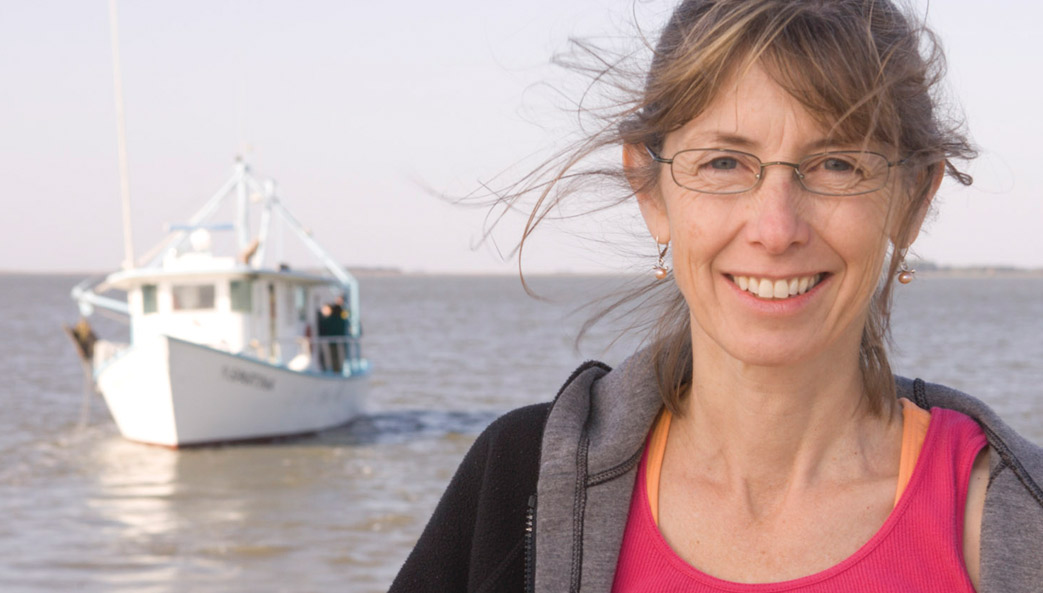Researchers receive Moore Foundation grant to study the global ocean microbiome

By Alan Flurry
A $1.3 million grant from the Gordon and Betty Moore Foundation will allow University of Georgia researchers to uncover answers about an important metabolic link that takes place in the Earth’s oceans.
Microorganisms in the largest microbial habitat on Earth, the ocean microbiome, function similarly to microorganisms in the human gut; they perform chemical transformations that keep the whole system healthy.
Phytoplankton, the microbial primary producers of the ocean, take up carbon dioxide and provide the building blocks for all marine life, while bacteria use these building blocks to direct the carbon to different functions in the ocean.
And while the billions of marine microorganisms present in every liter of seawater represent a structured ecological community that regulates how the Earth functions, from energy consumption to respiration, and including the operation of carbon and nitrogen cycles, the precise metabolic links between phytoplankton and bacteria have proven difficult to analyze.
Now, thanks to the Moore Foundation grant, UGA researchers are working to uncover the details of these metabolic transformations to assess the rates at which metabolites move between microbial primary producers and consumers in the surface ocean.
“The flux of key phytoplankton-derived metabolites into other marine organisms is the foundation of ocean biology,” said Mary Ann Moran, Distinguished Research Professor of Marine Sciences in the Franklin College of Arts and Sciences and principal investigator on the grant. “We’re looking at the step after marine phytoplankton use CO2 to create the building blocks: How fast are specific metabolites released from these primary producers cycled by bacteria?”
The importance of carbon cycling on Earth is clear, but understanding how carbon is obtained by bacteria, sustains bacterial growth and respiration, and connects the various microbial communities of the ocean has proven surprisingly elusive. How much carbon gets stored in the ocean and what sets that amount is also difficult to quantify because of the challenging chemistry involved and the fact that current techniques are hindered by the presence of salt in seawater.
“Half of the carbon fixation on Earth is carried out by marine phytoplankton, and half of that gets released to bacteria. So for a full quarter of the world’s total photosynthesis we are missing information about how metabolites are transformed at the earliest stages,” said Arthur Edison, Georgia Research Alliance Eminent Scholar in the Franklin College department of biochemistry and molecular biology, department of genetics, Institute of Bioinformatics and Complex Carbohydrate Research Center.
The UGA team designed a research plan that tracks chemicals of interest into bacterial cells, requiring a combination of new technologies and recent innovations in conventional spectroscopy.
“It’s a real challenge to separate small metabolites from the salt in seawater,” Edison said. “The metabolites exist in vanishingly low concentrations and are very difficult to measure.”
The team will use nuclear magnetic resonance spectroscopy, most commonly known as NMR spectroscopy, a research technique that exploits the magnetic properties of certain atomic nuclei to observe specific metabolites.
“But the game changer that will really give us a sensitive signal is called dissolution dynamic nuclear polarization,” Edison said. “This tool, plus a lot of patience in the lab, will allow us to see one molecule change into another, change into another, change into another, as long as the signal lasts.”
“That will allow us to see the flux of the relevant compounds into a bacterial cell, and be able to measure how fast the metabolites are entering and what they’re being converted into inside the cell,” Moran said.
The team will also deploy metabolite decoys into the ocean to capture proteins that interact with the decoys either during transport into cells or once they are inside.
Collaborators in the use of these new approaches are Elizabeth Kujawinski at the Woods Hole Oceanographic Institution, and Aaron Wright at the Pacific Northwest National Laboratory and Washington State University
The research will use lab cultures of bacteria isolated from various locations in the ocean including off the coast of Georgia’s Sapelo Island, and field studies with natural microbial communities.
The Gordon and Betty Moore Foundation fosters path-breaking scientific discovery, environmental conservation, patient care improvements and preservation of the special character of the San Francisco Bay Area. For more information, visit Moore.org or follow @MooreFound.
